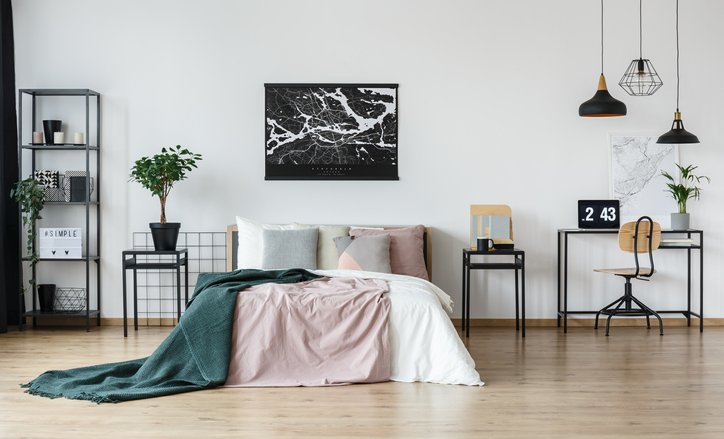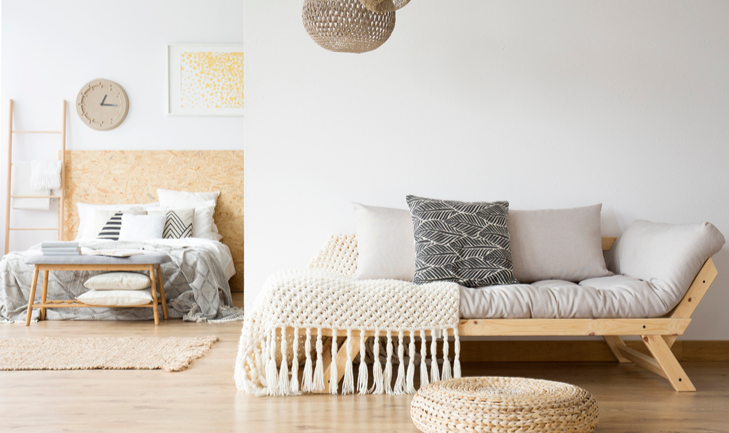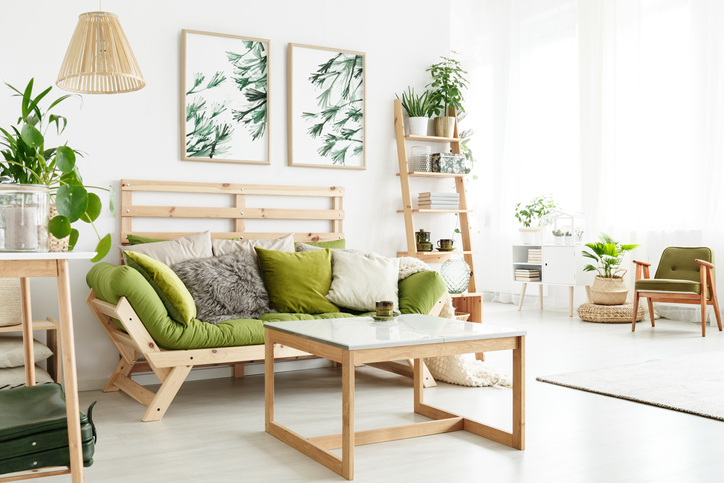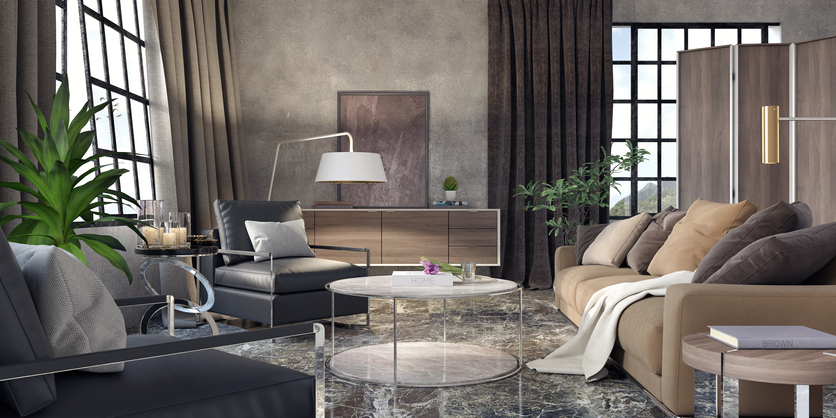Interior design is a career that’s only about a century old. The earliest known reference to interior design was in 1913 when Elsie de Wolfe became the first person to receive a commission for decorating a home.
Interior design developed from merely knowing how to apply paint and arrange furniture to taking every detail of a building into consideration. But until just 15 years ago, producing a sample for customers was an arduous process. Interior designers would go as far as putting together a small model of the rooms to presenting hand drawn and colored sketches combined with color palettes and textiles for clients to look at.
Things began to change when modern interior designers started using 3D CAD design software to help them create their designs. By using programs such as AutoCAD to make 3D rendered drawings, breathtaking and lifelike images can be offered to the customer. This new method of handling interior design has changed the entire process.
3D Rendering – Easy Changes and Vivid Beauty
When an interior designer uses 3D rendering services instead of 2D sketches, the client gets to see their design so vividly it’s as if they are there. Expert designers take into account everything from lighting and mood to texture and color. Renders are often so lifelike that it’s impossible to distinguish them from actual photos.
3D renderings are popular for a number of reasons beyond just being attractive. If a client doesn’t like how carpeting looks in their sleek and modern home, replacing it with wood flooring in the 3D rendering can be done in just a few minutes.

Any change can be quickly put together by designers, and since it’s so much more efficient, it allows clients and designers to get closer to what they genuinely envision. By working together to remove even the slightest flaw, the result is a happier customer much quicker than it would have taken in the past.
Creating a 3D rendering of a room also helps the designer in another manner – it helps them see potential flaws in their work before the client ever gets their eye on it. If the client, for instance, is looking for a certain mood, a designer can quickly identify if their idea fills that need or not.
Because changes are so much easier with 3D rendering software, freelance interior designers can spend more time troubleshooting their work, with the finished result being a far better product requiring less effort. By taking the time to experiment, we can provide the client with a much better solution than we might have with 2D sketches alone.
Other Practical Applications of 3D Rendering Design
If you’re part of a larger company that handles all aspects of a building, 3D rendering software can be used by your entire team to help speed up the process. Other areas 3D rendering can be used include:
- Architectural Design
Just as the inside of a building needs to be planned, so does the outside. 3D rendering can help with the architecture of the building and give customers a clear idea of what their building will look like both inside and out. - Animations
3D rendering doesn’t have to be just a bunch of still photos. It can be put together in an animation that tours the building, letting the customer see every angle of the project as if they were really there. This can add an extra dimension to an already stunning presentation and make for a happier, more excited customer. - Walkthroughs
Slightly more advanced than the animations are walkthroughs that allow the customer to view the interior independently, using a controller to walk through the interior themselves. This can add a degree of realism that amazes and impresses the client. Walkthroughs are becoming more commonplace, especially in more modern firms. If your team also handles architecture, flythroughs are another option that allows the client to view the building both inside and out. - 360 Viewing and Virtual Reality
Virtual reality and augmented reality are currently at the forefront of design. By using special goggles, the customer can turn their head in every direction as they walk through the interior of their future design. This is the most realistic render available and can be incredibly immersive. Augmented reality, virtual reality, and 360 viewing aren’t common yet, but they are the future of where rendering can go for interior design.
Improves Communication to Clients
3D rendering isn’t just for creating an eye-popping effect for your clients, or for spotting embarrassing errors. Many forms of CAD software also offer cloud-based technology, so you can communicate with clients and other team members quickly and easily.
These programs allow you to email renders directly to clients, get their feedback, and make changes at lightning speeds. If you run into trouble and aren’t sure what to do, you can easily discuss problems with your mentors or other team members.

If your work directly involves other people, working together doesn’t get easier. Changes made by other team members automatically update on your version as well. Thanks to this software, you always have the most up-to-date version to look at.
This helps you save time throughout the entire creative process and can also lower costs for both you and the client. 3D renderings reduce the number of hours needed to produce a new concept, help the customer see exactly what’s in your creative mind, and may even help reduce the materials needed to create a new design.
A Step by Step Look at How Innovative Technology Works for Interior Designers
For the most advanced interior designers, adopting CAD software is instantly beneficial. The process begins as soon as the customer asks them to create something impressive for their new apartment.
The customer has seen the portfolio of eye-popping 3D renders created by the firm for other clients, and they can’t wait to get something like that for themselves. They know they won’t have to sift through swatches of cloth and paint samples – they want to see the project as if it were real. The interior designer listens to the client and asks questions to better understand what they want in terms of the look and feel.
Immediately, the interior designer gets an idea of how it will look. He puts together an incredible 3D rendering, and on the day of the big reveal, lets the customer do a walkthrough of the virtual apartment on the computer. The customer loves most of it but wants to make a few changes.

Thanks to the flexibility of 3D rendering, furniture can quickly be swapped out, lighting changed, and the color scheme fine-tuned very quickly.
When the changes are made, the customer looks at it and loves it. Thanks to the efficiency of CAD software, getting an exact cost of supplies to transform each room is also easy. The team can now fill the apartment with color, light, and furniture with confidence, knowing the client is going to love their vision.
Thanks to the relatively large selection of interior design software out there, stories such as this one are becoming a bit more commonplace.
The Future of Interior Design
Interior designers are amazing artists. They can take an average room and transform it into an extraordinary one. They can make any room look and feel even better than before. New software has put thousands of different textures, furniture styles, and other premade 3D objects at the hands of interior designers everywhere. These premade models don’t just help them create displays of what they want to make – they can also help give these designers new ideas.
New software using augmented reality has also made the planning stages of interior design easier. When a designer is tasked with the problem of understanding what a customer wants, it can be challenging to figure out what they mean based on description alone. A “modern” interior could mean anything from stainless steel appliances and timeless pieces to futuristic looking sofas in bright colors.
Understanding what a client wants can be as simple as showing them what it would look like in their own home using an iPad. Augmented reality allows you to choose that piece of furniture and place it in the room, combining aspects of a 3D rendered item and the real world to give customers new insight on how their design might look.

We talked about these new technologies earlier, but the question is, what could a step farther be?
It may be that in the future, interior designers will be able to not only design but 3D print the furniture desired by the clients. As we toward using technology to make our lives faster and more efficient, who knows what new technologies will become available to help make interior design more engaging for customer and designer alike.
Millennials Want 3D Renders
As Millennials grow older, they are becoming more interested in purchasing investments and improving what they already have. This means the clients that interior designers see often are people who grew up alongside technology. They’re usually more comfortable with it than they are with more traditional methods of showcasing interior design.
The smart customer won’t just be looking at one interior design company to potentially handle their work. They’ll look at as many different interior designers as possible and see which one they like best. High tech firms that have adopted 3D rendering are often favored by these clients because they are more at home with technology.
If your interior design company still relies on old-fashioned methods to get things done, consider revolutionizing your business by adding 3D rendering software to your protocol. There are dozens of programs out there that can suit the individual needs of every designer, whether that be a simple tool or something more complex.
Regardless of what you pick, software is available that can transform your interior design from ordinary to extraordinary.
Find Interior Design Experts on Cad Crowd
On Cad Crowd, we have a network of expert freelance interior designers and companies ready to assist with your project. They’re experts in all types of CAD software, including those specifically made for interior design projects. If you’re in need of some help, contact us today for a free quote.
